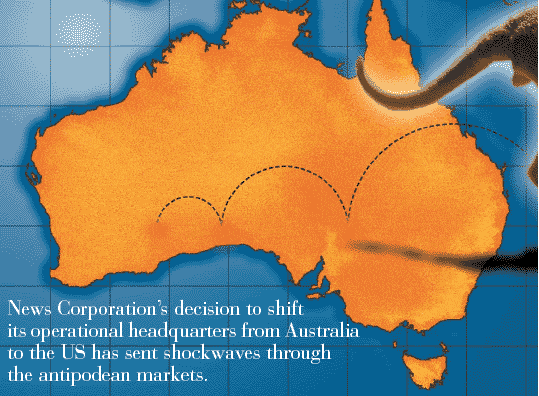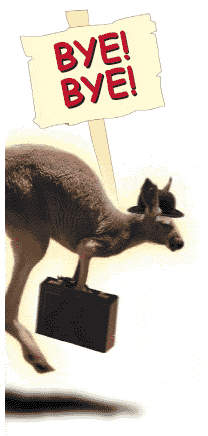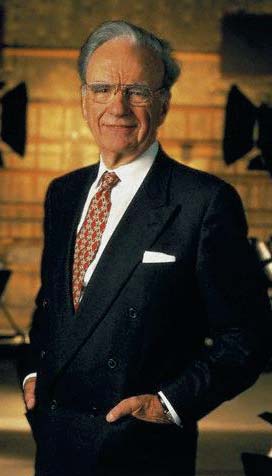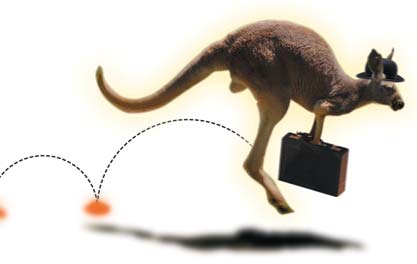
In April the darling of the Australian Stock Exchange (ASX), Rupert Murdochs News Corporation, announced its intention to pack its bags and move to the United States, where it would reincorporate in Delaware. For markets and investors in Australia and beyond, that news was a shock. But it got worse. In late June Standard and Poors announced that News Corp. could no longer be listed on its Australian indexes if it was to join the S&P; 500 in the US.With a market capitalization of A$44 billion, News Corp. constitutes a hefty 8% of the Australian S&P; 200the markets benchmark index. Stripping it out of the listing would, at the very least, lead to some frantic portfolio rebalancing for local investors.

Not surprisingly, the reaction in the Australian market was one of considerable consternation. Although to all intents and purposes the media con- downglomerate made the US its home a long time ago, the ramifications of its removal from the Australian indexes would be felt throughout the local marketand could hit the national stock exchange exceptionally hard. With Australian equities already heavily concentrated in only a few sectors, News Corp. would be sorely missed. Banks and property trusts would dominate the index, resulting in a significant concentration in interestrate- sensitive stocks. As Munib Madni, investment manager at the UK- and Singapore-listed Aberdeen Asset Management, observes, The Australian market is becoming bunched up. Some of the concerns in the market simply derive from the excess of work ahead for many institutional investors. In light of S&P;s announcement, index managers are faced with the formidable task of selling their News Corp. shares and redirecting their portfolios. Even active managers who are less tied to the index will have reason to shift some assets. Many have large holdings in News Corp. due to its sheer size and as a result of the changes will have to reconsider their strategy going forward to ensure they are not left exposed.
How the changeover is handled is another concern, of course. Australian investors may lose out if they are forced to sell prematurely at a low price. There is little reassurance that American investors will jump on board immediatelyespecially if there is no particular incentive to do so. The uncertainty is causing problems, too. There was a ripple of concern through the market in June, for example, when it appeared the S&P; would effect the changes over a matter of several days. However, after further market consultation, the agency announced in early August that News Corp. would exit the Australian indices over a nine month period in four stages. In July Richard Humphry, CEO of the ASX, further played down any concerns, estimating that there would be a sixmonth transition period.
Small Loss for Australia, Giant Loss for ASX

|
|
|
Institutions and individual investors may be concerned about the damage News Corp.s move will cause to their portfolios. It is the Australian Stock Exchange, however, that stands to lose the most. And while the ASX has played down any concerns, contending that it is far too early to assess the impact, analysts are more open about its effect. Ashwini Chandra of Goldman Sachs JBWere estimates that the ASXs earnings could drop by up to 11% in 2006 and 2007. This reflects the fact that News Corp. is the most heavily traded stock on the exchange. While Chandra avoids a hard-and-fast conclusion, she is certain there will be a significant impact. Unfortunately there is no accurate way of knowing exactly what the impact might be on the ASX, she noted in June. What is clear though is that if News Corp. ordinary and preference shares make up around 5% to 8% of trading volumes on the ASX, there is clearly going to be some impact on trading volumes.
Deutsche Bank analyst Paul Hinds forecasts a further 6% earnings down side should News Corp. be de-listed: On our estimates a full de-listing in Australia is likely to result in the loss of up to A$10 million in revenues, principally due to reduced equity and derivative trade volumes. There is also the worry of investors reallocating their funds: There is no assurance that they will keep their money in Australia particularly foreign investors. Rather than putting the funds into other leading stocks on the ASX, there is a risk that they will turn to international equities instead.
A spokesperson for the ASX acknowledges that the decision must result in some trading migrating

to the NYSEnot least because more American institutional investors who are currently unable or not prepared to trade News Corp. will do so. But he points to other Australian companies that have gone overseas, such as BHP and Brambles, and notes that their dual listings have actually increased liquidity in the Australian market.Then again, unlike BHP (now known as BHP Billiton), News Corp. will have its primary domicile in the US, not Australia. The spokesperson admits that News Corp. is in a particularly unusual position, making comparisons difficult. It will take some time before the full effect is known: It is as much unknowable as unknown, he says.
|
INVESTORS FACE DIFFICULT CHOICES |
|
For investors, the most pertinent question is whether the move will benefit News Corporation as a company. The conclusion: While it may experience some volatility in its share price as the stock changes hands, News Corp. is likely to enjoy considerable upside in the long term. The shift means improved access to capital: a diversified shareholder base and enhanced liquidity. As one fund manager notes, How do you compare a US$12 trillion market to Australias US$600 billion? The move to the US also allows for a lower cost of capital. This may be obtained through an expected narrowing of the spread between ordinary and preference shares and a potential share price re-rating in light of the fact that News Corp. currently boasts lower multiples compared with the other media companies. It also cant be ignored that News Corp. is in every sense a global company, with 75% of its income derived from the US. Its businesses include a range of Fox assets, Sky Italia, HarperCollins book publishing, television and cable networks, as well as a host of newspapers and magazines. Certainly the American analysts are upbeat. Anthony Noto of Goldman Sachs in New York noted in May that News Corp. has likely entered a harvest mode after several years of acquisitions that have resulted in a solid array of both high growth and more stable assets. In late June he concluded that a re-domicile was inevitable and that, given the likely narrowing in spreads between the two lots of shares, Australian investors were better off selling now rather than later. Noto also warned: While it is likely Australian investors would not be in favor of re-domicilegiven charter restrictions, current holdings and the relative attractiveness of an investment in NWS [News Corp.] to other Aussie securitiesthe market remains free and US and global investors can continue [to] accumulate shares until they achieve the ownership level to control the vote. His conclusion? It creates a self-fulfilling prophecy. |
|
REGIONAL MARKETS CONSIDER THEIR OPTIONS |
|
The 2003-2004 financial year was a bumper one for the Australian Stock Exchange. At the end of July its CEO, Richard Humphry, announced record annual earnings: an A$82.7 million net profit after tax, up 43.2% on the previous year. But as Humphry prepares to step down in November, to be replaced by Tony DAloisio, a managing partner of law firm Mallesons Stephen Jaques, the future looks far from certain.
It is not merely News Corporations move that has knocked the exchange. The ASX is also contending with a fast-diminishing property index, with property trust giant Westfield set to combine its three units at the beginning of July and GPT-Lend Lease and possibly Stockland to follow suit. |
Investors Threaten To Oppose Move

|
|
Down under, but not out: Australias stock exchange is looking at ways to |
Much of the noise in the market has been waved aside as hype. One Sydney investor puts it down to the baying of a whole lot of miffed brokers who stand to lose much of their trading business from the move. Of course, media research analysts may also become redundant. Nevertheless, many of the local fund managers, who are mandated to invest in Australian equities, do feel strongly about the move. Indeed, a number of them have threatened to vote against the change of domicile when the issue is officially canvassed in October. Ordinary investors hold around 41% of News Corp.s ordinary stock and 38% of its preference shares, so their threat is not an idle one. Investors influence will be further enhanced by the fact that key shareholders among the Murdoch family have removed themselves from the vote. Holding 29% of the voting stock, the family has agreed to abstain from voting on the basis that it is selling the privately owned Queensland Press to News Corp. as part of the shift in domicile; any vote by the family would constitute a conflict of interest.
Not all are convinced Rupert Murdoch will stand by this assurance, however. On the other hand,Anthony Noto of Goldman Sachs in New York believes American investors might ultimately sway the vote by buying up a sufficient stake in the company over time (see box, page 20). As one Sydney-based institutional investor points out, News Corporations Rupert Murdoch is unlikely to have made such a proposal without first having considered it from every angle. And despite talk of dissent, a number of Sydney-based fund managers admit that News Corp.s move is inevitable and say that they are unlikely to oppose it. Says Suellen Henry, senior portfolio manager at the local investment house 452 Capital: News Corp. will do it ultimately anyway.And it makes sense as far as were concerned. It will add value to the company. Madni at Aberdeen Asset Management adds:News Corp. wont make or break the Australian market. Overseas investors see lots of companies worth investing in. It wont scare them away.He concludes,Theres lots of talk going on and lots of different agendas.
|
THE JAMES HARDIE STORY |
|
Australians have reason to be suspicious of overseas moves just now. It recently became evident that the global building company, James Hardie, had neatly limited its liability to asbestos victims in Australia by relocating to the Netherlands. The company produced asbestos throughout much of the past century, ignoring evidence of its serious damage to peoples health. Hardies stated aim when it packed its bags in 2001 was to limit its tax liability. It cut ties with its asbestos subsidiaries, promising the courts that it had left sufficient funds behind to pay any outstanding claims. Now it appears to have misjudged such claims by some A$2 billion, according to a special commission of inquiry established by the New South Wales government. Even if it is proven that Hardie and its directors acted fraudulently, there appear few options for the victims. Unlike the US, Australia has no legal doctrine of fraudulent conveyance, which would prohibit companies from intentionally dumping subsidiaries to avoid their legal responsibilities. More worryingly, even if the companys move is adjudged illegal, victims have little recourse to Hardies cashbox. There is no treaty between Australian and the Netherlands that allows for the enforcement of judgments. If Australia does change its laws in relation to limited liability, it will have James Hardie to thank for it. With some 45,000 asbestos victims expected over the next decade, payment is a critical issue, and the Australian government is determined that taxpayers should not bear the brunt. |

FIONA HADDOCK



